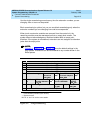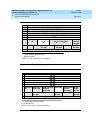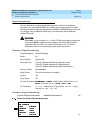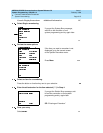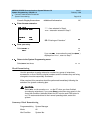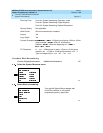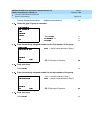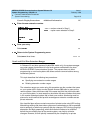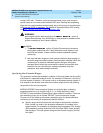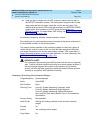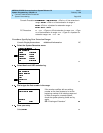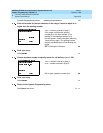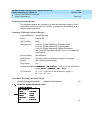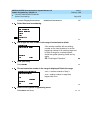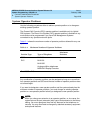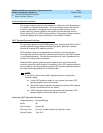
MERLIN LEGEND Communications System Release 6.0
System Programming
555-660-111
Issue 1
February 1998
Common Administrative Procedures
Page 3-20System Renumbering
3
network UDP calls. Therefore, these techniques should not be used except in
special cases for non-local private network UDP calls. Deleting and prepending
digits are very useful methods and are easily set up for routing non-local dial plan
calls over the PSTN, if necessary. For additional information about UDP routing,
see “UDP (Uniform Dial Plan) Routing” on page –401
.
!
WARNING:
Use extreme caution when employing the option of
System Renumbering. Any numbering you have entered is erased and the
system numbering is set to factory defaults.
NOTES:
1. The
option of System Renumbering renumbers
local system extensions only. It also removes the local system’s non-
local dial plan entries. It does not affect remote networked systems’
numbering.
2. Non-local dial plan ranges on local systems should be large enough to
minimize range renumbering when a remote system changes. When the
numbering of an external networked system changes, the system
manager should check the new external numbers and ascertain their
impact on the non-local dial plan numbers accessed using this
procedure, then make changes manually.
Specifying New Extension Ranges 3
This procedure verifies that extension numbers on the local system do not conflict
with those on a networked external switch. For example, if Extension 110 exists in
the local system, Extension 1100 cannot exist on a networked external system. It
also checks to see whether new extension number ranges conflict with existing
ranges set for the non-local system.
MERLIN LEGEND Communications System non-local dial plan numbering
supports extensions up to 4 digits long (2-, 3-, or 4-digit dial plans), while
DEFINITY Communications Systems have 5-digit extension numbers. There are
two methods you can use to number DEFINITY non-local dial plan ranges.
Choose one of the following techniques, depending upon the actual extension
numbers you are entering in ranges and potential conflicts:
■ Specify ranges that include the first four digits in the extension numbers.
Each number you enter in the procedure represents 10 numbers in the
remote system. For example, an extension range entered as 4321 through
4322 represents remote extensions 43210 through 43220. Users actually
dial five digits. The local system recognizes the number range by the first
four digits.



